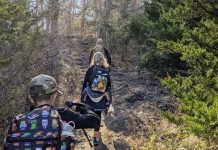Nothing says fall in Kansas quite like the word Harvest. Here in the “Bread Basket” we grow a lot more than wheat, however, I’m willing to bet that when most of us hear the word Harvest here in the ICT, wheat is what comes to mind. In fact, wheat isn’t even harvested in the fall, but there is something about those gorgeous golden stems that seem to go hand in hand with pumpkin spice lattes.
As a Kansan, it seems as though we should all have a small understanding of agriculture since it is, in fact, our states largest revenue source, and what we are known for to the rest of the country. To be able to share with our children what is happening along Kansas highways, would not only encourage pride in our state, but also make those trips in the car so much more fun (and educational!).
What is Harvest all about, anyway?
First, it is most important to understand the crops life cycle to be able to recognize them. According to the Kansas Department of Agriculture, our states largest crops are: Wheat, Corn, Cattle, Soybeans and Sorghum (aka Milo). Let’s look at a few of them…
Let’s start with Wheat, for our Wu Shocks….
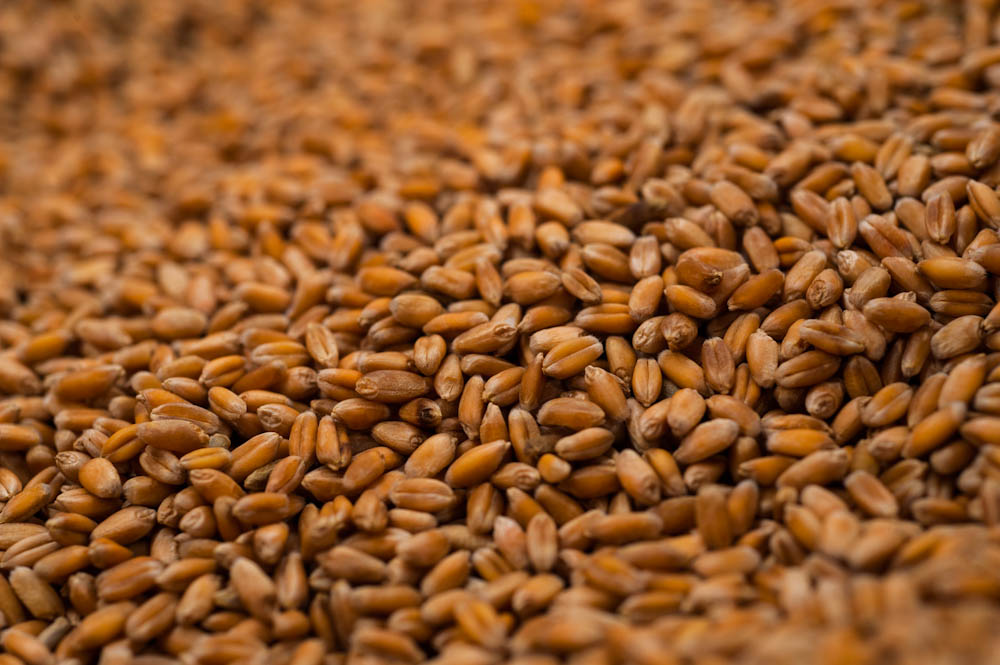
Wheat seeds are very tiny. In fact, there are 35-50 seed in each stem! In Kansas, we typically plant Hard Red Winter Wheat – a variety of wheat that we plant in the fall.
It grows a little, goes dormant and then in the spring when it warms up just a bit, the wheat continues to grow into the most beautiful shade of green grass. Wheatgrass – sound familiar?
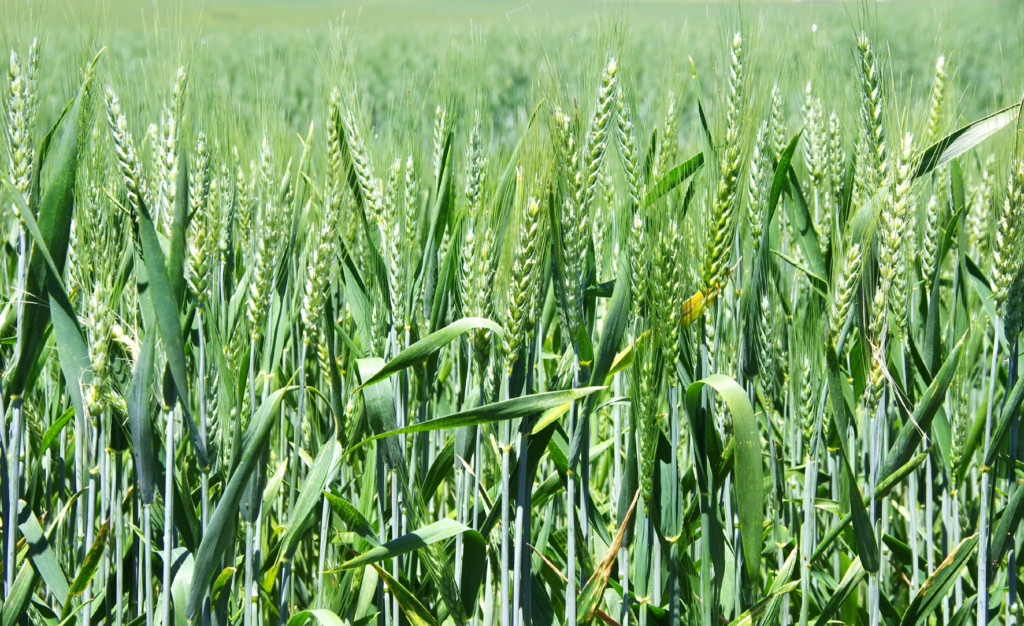
As it continues to grow, it gets it recognizable head, but is still green.
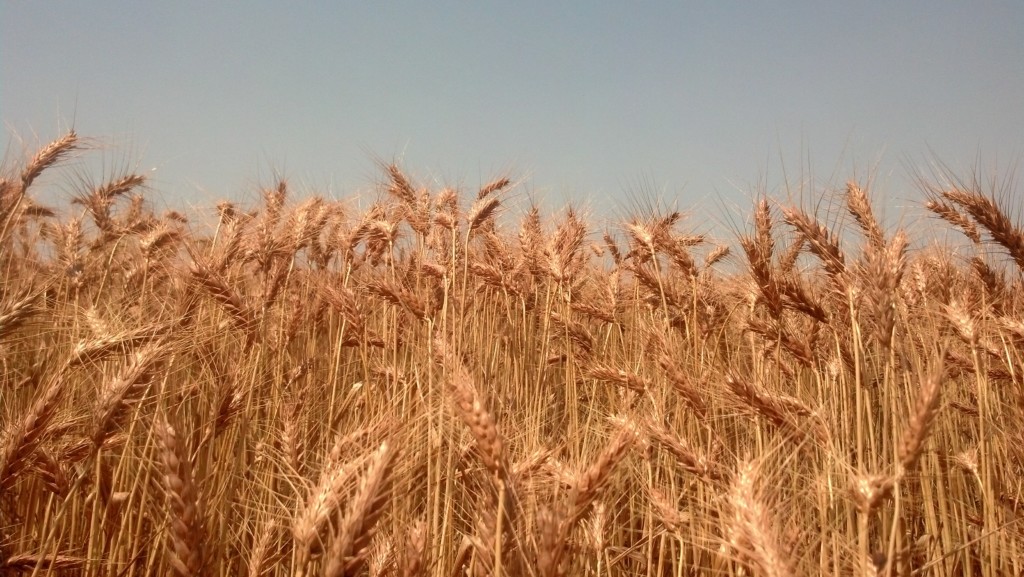
As it starts to die, it starts to turn golden. It is when the plant is dead and dried that we harvest it. In Kansas, this happens typically in early summer – mid-June.
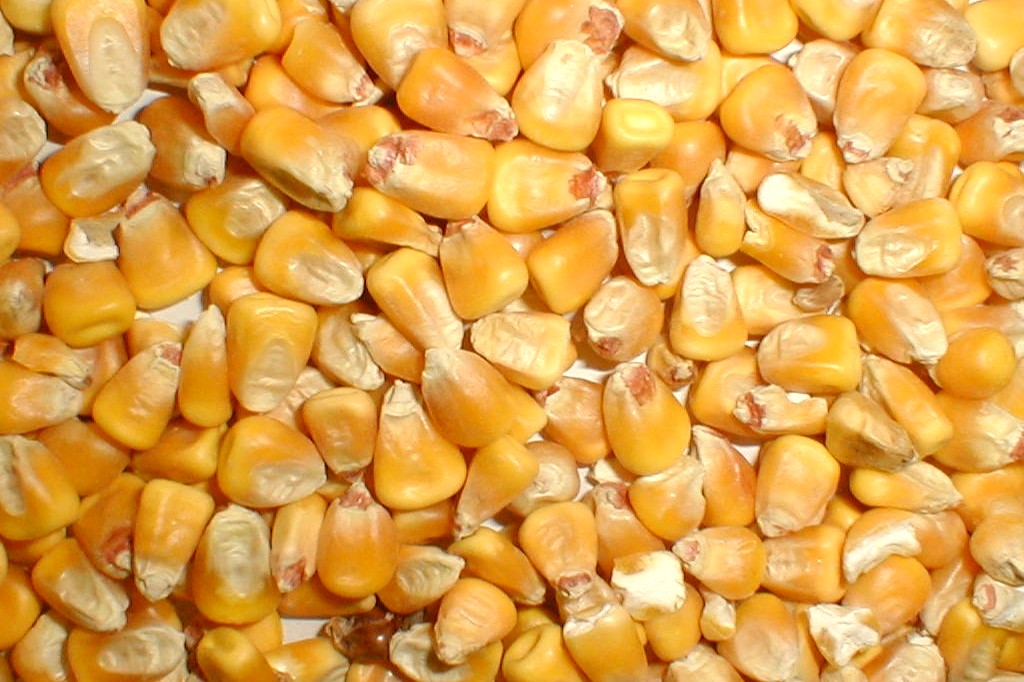 Corn – There are many varieties of corn, just as with other crops, we plant “field” corn in the spring. Field corn is used for many things such as ethanol, animal feed and in processed food products. We harvest in the early fall.
Corn – There are many varieties of corn, just as with other crops, we plant “field” corn in the spring. Field corn is used for many things such as ethanol, animal feed and in processed food products. We harvest in the early fall.
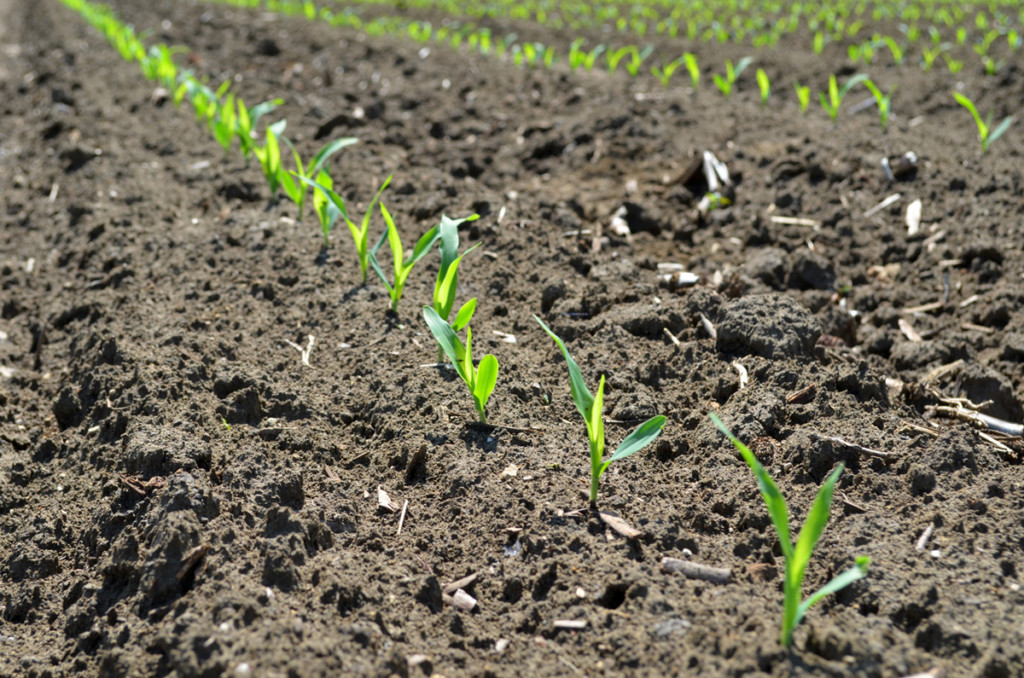
When it comes up it is a sweet, tiny green seedling.
As it grows, very, very tall in fact, the ears of the corn appear and grow. (This is the stage that other varieties, such as sweet corn – the varieties that we eat fresh, and enjoy on the cob, would be picked.)
Soybeans planted in late spring or early summer and harvested in the fall.
Actual harvest is an exciting and busy time on the farm. It requires quite a few people and quite a few pieces of equipment too.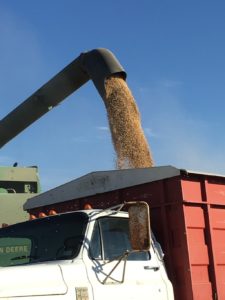
A combine is a large piece of equipment that is fitted with a “header” (the front part) appropriate to the plant it is harvesting. Out in the field the combine cuts down the plant at its base, inside the machine the seeds are collected and the stalks or stems (depending on the plant) are discarded. The seeds are collected in a tank and then the seeds are then transferred onto a truck via an auger once the tank is full. When the truck is full, the seeds are taken to a grain elevator for storage.
Hope you and the kiddos enjoy trying to identify crops along the highway! Please remember, be cautious and patient of the farmers that are moving all of this equipment from field to field. They sure appreciate it!
Happy Fall Harvest everyone!
Make sure you never miss out on things to do in Wichita: subscribe to our weekly Wichita Moms Blog newsletter! Be the first to know about our exclusive events, special offers and discounts, neighborhood group activities and, of course, local resources and parenting voices powered by local Wichita moms!






